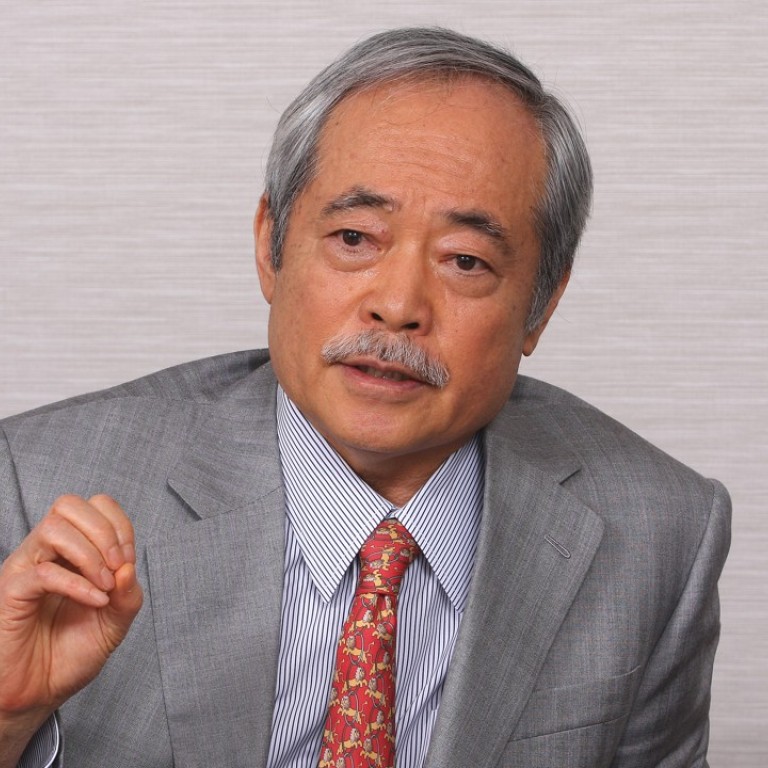
Ferrotec founder and CEO Akira Yamamura: A driving force in thermodynamics and cutting-edge innovation
Akira Yamamura’s academic study of thermoelectric modules and thermodynamics grew into a two-person company that now employs over 6,500 people across Asia, Europe and the US
[Country Business Reports interviews and articles by Discovery Reports www.discoveryreports.com]
It started with a dream to build a billion-dollar global company in the technology space. Ferrotec founder and CEO Akira Yamamura never wavered in turning this dream into reality. Even when faced with challenges along the way, Yamamura ceaselessly worked toward this goal.
Ferrotec’s technological leadership stems from Yamamura’s extensive expertise. Yamamura is a product of two leading research universities, Keio University and Northeastern University. He has a strong pioneering drive to apply his knowledge in thermoelectric modules and thermodynamics, which were his areas of focus for his master’s degree thesis at Northeastern.
It was at Northeastern where Yamamura crossed paths with Arthur Foster, dean of the mechanical engineering department. Foster presented the opportunity of a lifetime to Yamamura when the former offered him a scholarship at Northeastern.
Foster also provided the encouragement Yamamura needed to excel in his thesis. Yamamura’s passion in this field led him to write the first thermoelectric handbook of the industry. With this book, not only did Yamamura establish the foundation for all of Ferrotec’s technologies, but he also made invaluable contributions to the fields of thermoelectrics.
Living in the United States and armed with technological knowledge in the above-mentioned fields, Yamamura joined the American company Ferrofluidics. Having gained industry contacts and experience, Yamamura established Nippon Ferrofluidics in Japan, which later operated as an independent entity from its parent company.
“Because I was there for a long time, I was able to maintain relationships with customers and engineers that helped us develop thermoelectric modules,” Yamamura says.
After establishing factories in Japan, Yamamura ventured to China and established Hangzhou Dahe Thermo-Magnetic Electronics and Shanghai Shenhe Thermo-Magnetic Electronics. The move to establish manufacturing facilities in China made Ferrotec fully capable of producing its own mechanical processing parts. Even in China, Yamamura was a pioneer as he was among the first to mass produce within a clean room environment.
Our Chinese business developed faster and became larger than I had expected
“A manufacturing business will be ruined if it gives up on being a maker and a creator. Outsourcing spoils a company. I didn’t decide to enter China because of low personnel costs. My intention was to maintain the company’s technical abilities by establishing a manufacturing base there. Our Chinese business developed faster and became larger than I had expected,” Yamamura says.
Ferrotec was faced with challenges – hitches in manufacturing and a global economic crisis. Nonetheless, with Yamamura at the helm, the company successfully overcame these bumps in its path. Yamamura’s expert leadership also enabled him to empower Ferrotec to stand as an independent company that slowly but surely made its way to the forefront of the industry with its next-generation products. As it continued its dominance in the industry, Ferrotec reacquired its parent company in a friendly takeover.
With Yamamura’s perseverance in leading a dedicated and talented workforce, Ferrotec was able to regain its footing and continue on its growth path. When Yamamura established the Japanese company, it only started with two people. Today, Ferrotec employs more than 6,500 people across Asia, Europe and the US.
Yamamura took the initiative to lower the steep price of thermoelectric modules to encourage greater consumer adoption, and it is a strategy that paid off well for the company. Ferrotec also made strategic acquisitions to expand both its knowledge base and its product portfolio.
“The company wasn’t exactly running towards a certain goal; we were just making desperate efforts to stay in business. There was no one way to success. Sometimes it took a well-planned and carefully designed strategic approach in which we strived to achieve a goal; at other times, we ventured into a lucrative deal as a stopgap measure or stumbled across opportunities through unexpected encounters,” Yamamura says. “For good or ill, our past 10 years have been a combination of those two approaches. But I am confident I have established a firm operating base for my successors to develop the business further.”
With bright prospects for the future, Ferrotec streamlined its structure and changed its name from Ferrotec to Ferrotec Holdings– signifying the company’s thrust to further globalise its business.
“This is not the end of Ferrotec’s story but only the beginning. We will keep going forward,” Yamamura says.
